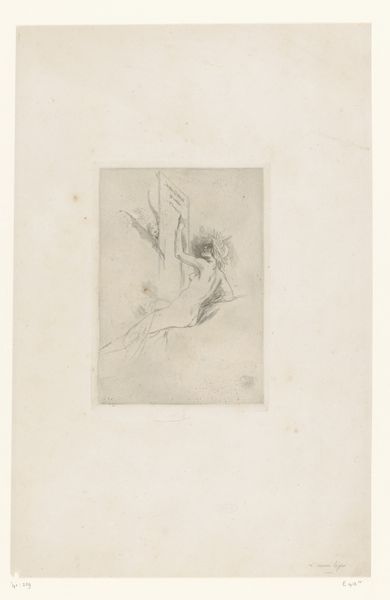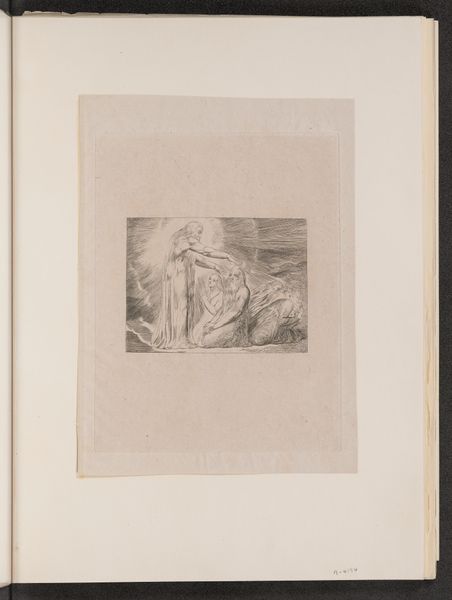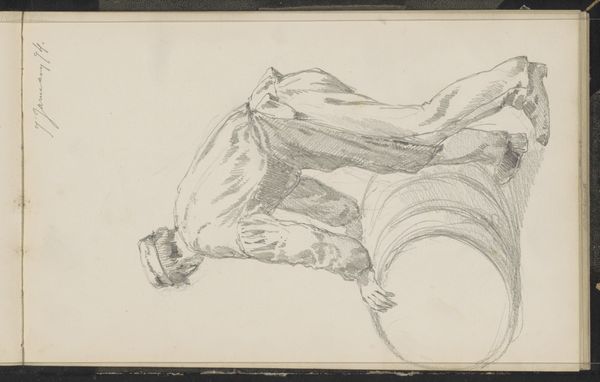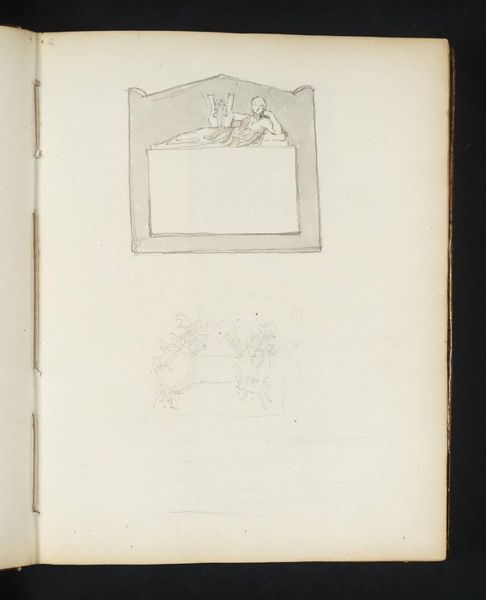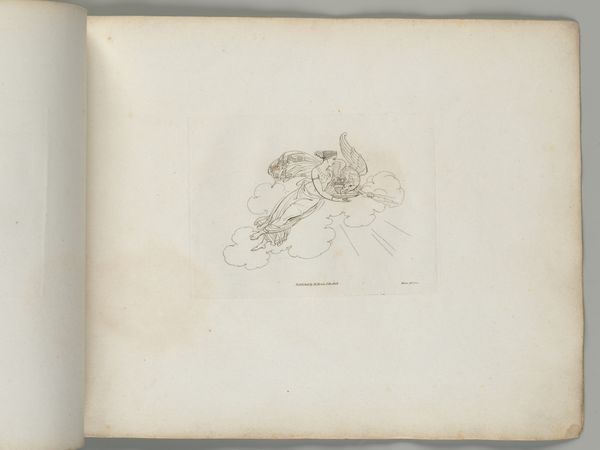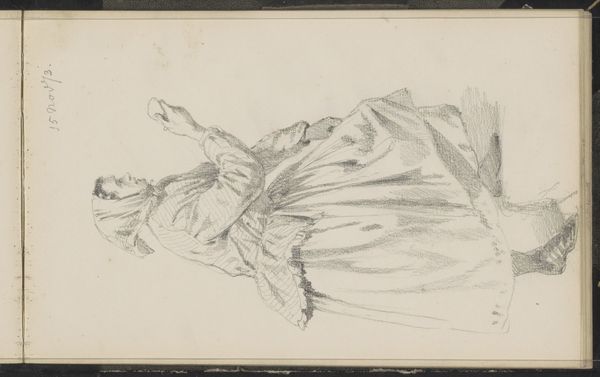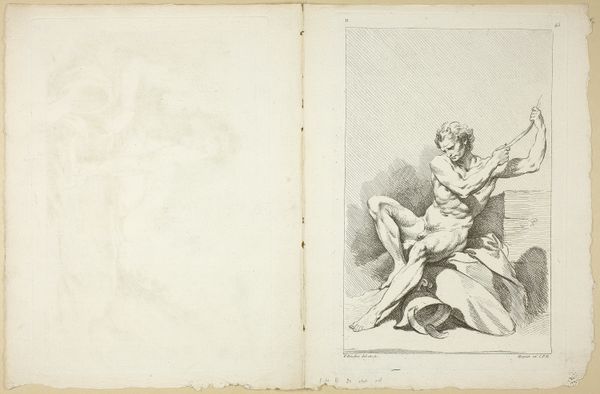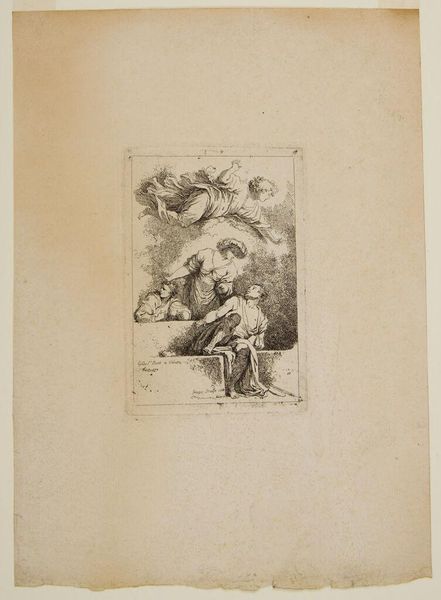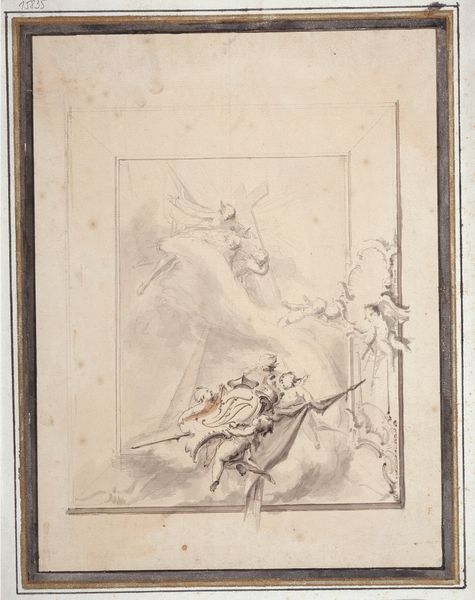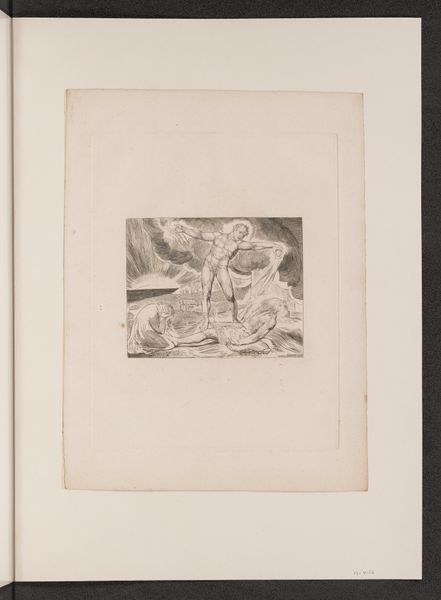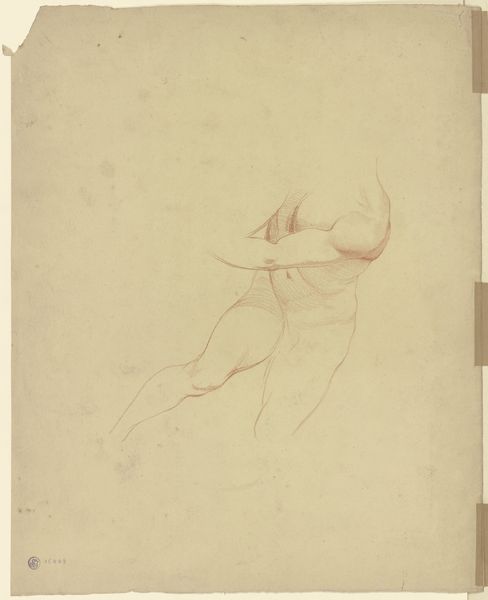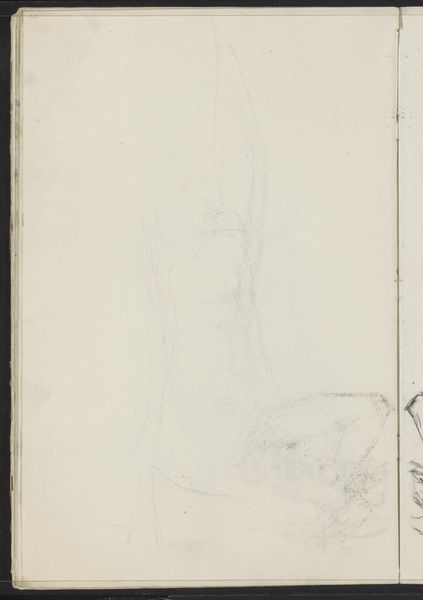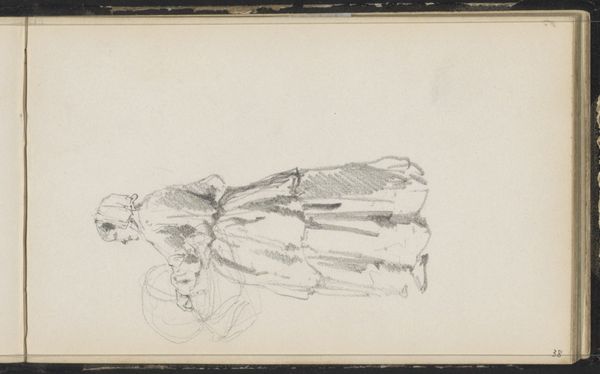
drawing, pencil
#
drawing
#
toned paper
#
light pencil work
#
quirky sketch
#
pen sketch
#
incomplete sketchy
#
classical-realism
#
figuration
#
form
#
personal sketchbook
#
ink drawing experimentation
#
pen-ink sketch
#
pencil
#
line
#
sketchbook drawing
#
history-painting
#
nude
#
sketchbook art
Dimensions: height 363 mm, width 252 mm
Copyright: Rijks Museum: Open Domain
Curator: This drawing by Karl Joseph Aloys Agricola, dating back to 1812, is titled "Zittende genius bij een leeuw"—or, "Seated Genius with a Lion". The piece is rendered in pencil and ink on toned paper. Editor: My immediate reaction is one of curious tension. The light pencil work creates a dreamy, almost unfinished quality, while the figures themselves seem poised between tenderness and dominance. Curator: Exactly! The sketch invites us to delve into the complexities of power and representation, particularly as they relate to classical allegories. Consider how the "genius," traditionally a symbol of creative inspiration and masculine intellect, is here rendered in a somewhat vulnerable, even sensual pose alongside the lion. What does it mean to position these traditionally potent symbols in such a close, intimate relation? How might gender dynamics come into play, influencing this scene's conception? Editor: Looking at the materials and technique, I’m struck by the contrast between the delicate, almost ethereal quality of the genius’s body and the more heavily defined lion. The layered pencil and ink work likely involved careful choices about which areas to emphasize. What does that say about the relative importance of the genius’s intellectual or spiritual capacity versus the lion’s brute power, especially when we factor in access to resources and how they shaped these material choices? Curator: It’s fascinating to think about the socio-political landscape during the time Agricola created this work. The Napoleonic era was a period of revolution and upheaval across Europe. It is tempting to think the image is an expression of anxieties and the reconfiguration of social and political power that played out throughout Europe in 1812. This composition resonates deeply within those contexts, where old empires are challenged by the concept of enlightenment. Editor: Absolutely. The act of sketching itself, of capturing fleeting ideas and forms, speaks to the changing relationship between artists and their materials, a kind of demystification of labor that becomes visible. This image makes us examine art in its making—the artist's relationship to paper, pencil, and ink—reflecting the broader transformations happening at the turn of the nineteenth century. Curator: Thank you for teasing out how these subtle artistic choices highlight broader issues. This allows the artwork to provoke further critical consideration about the historical backdrop that fostered the piece's original making and intention. Editor: For me, seeing how Agricola manipulated accessible, mundane materials and sketching techniques reveals that art's value truly stems from the process and intention.
Comments
No comments
Be the first to comment and join the conversation on the ultimate creative platform.
